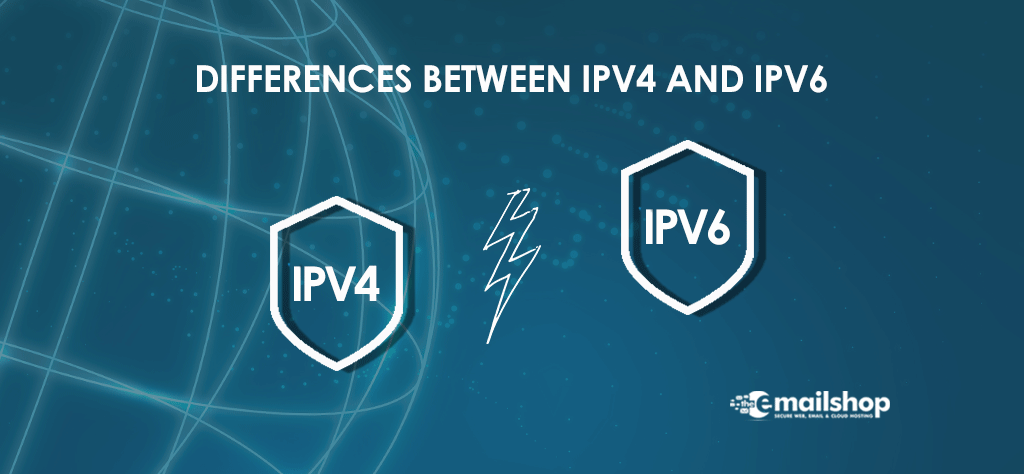Are you confused between IPv4 vs IPv6? The purpose of this article is to clarify the difference between both. However, first, let us understand what IP means in the first place.
IP: Internet Protocol
IP stands for internet protocol. It tells how computers or devices connect or communicate with each other over a network. Speaking in more technical language, IP is a set of rules that governs routing the data packets, so data can move about and reach the destination computer or device.
Every time a computer sends some information, it divides the information into smaller parts. These chunks are called packets. Each packet includes IP information so it can reach the exact spot.
And, here is another side of the story. Every device on the internet has a unique IP address. That is how you can distinguish it from other sides. An IP address looks something like this:
32.253.431.175
Assigning IP addresses to every device makes things very easy. Networks can route the data packets around and ensure they reach their destination.
The v in IPv4 and IPv6 means the versions. So, yes, IPv4 and IPv6 represent the different IP versions, and we will discuss them in detail.
You may also like to read: How to prevent DDOS attacks
What is IPv4
Reading 4 in the name makes many people think that IPv4 is the fourth version. But actually, it is the first version of IP. IPv4 is almost four decades old. It was released in 1983, and surprisingly it is still the most well-known version of IP.
It uses a 32-bit address, which many people are already familiar with. Though some IP blocks are reserved for particular uses, it still provides almost 4.3 billion unique addresses. Below is an example.
32.253.431.175
What is IPv6
IPv6 is a newer version. It is a 128-bit address format and has both numbers and letters. Below is an example of IPv6.
3002:0bd6:0000:0000:0000:ee00:0033:6778
Why Was a New Version Required?
So, why do we need the new version? What did IPv4 lack? It has given us almost 4.3 billion potential IP addresses. But, we made IPv6 because we required much more. The number of devices in the world is constantly increasing. There are a lot of people and a lot of devices. Then the world is also seeing the rise of IoT devices and sensors. With this, the number of connected devices is also increasing.
So, the world made IPv6 when it ran out of unique IPv4 addresses. This shortage was the biggest reason why we needed IPv6. Let’s get to the nitty-gritty technical reasons, though, and we will discuss them too later.
More Differences Between IPv4 and IPv6
We already know that IPv4 uses a 32-bit address, and IPv6 uses a 128-bit address. It means that IPv6 offers 1028 times more addresses. It solves the issue of space running out.
Another difference is that IPv6 is an alphanumeric address and has colons. IPv4 is numeric, and periods separate it rather than columns.
And here are some technical differences. However, non-developers do not need to know it. In more precise words, they are the edges that IPv6 has over IPv6.
- IPv6 includes built-in quality of service.
- Also, it has a built-in network security layer.
- IPv6 eliminates Network Address Translation (NAT) and allows end-to-end connectivity at the IP layer.
- Multicasting is optional in IPv4, but it is part of the base specifications in IPv6. It lets you transmit the packet to many destinations using a single operation.
- Also, IPv6 has large packet headers.
IPv6 has 1028 more times than IPv4. Now, IPv4 supports 4.29 billion addresses, so 1028 times would be a vast number, and you have to represent it in exponential power. The easy way to write it is 2^128. So, running out of space would take a very long time.
How Much Difference Is There In Speed?
There is not a significant difference. However, IPv6 is slightly faster than IPv6. Moreover, several surveys by companies like Akamai and Sucuri demonstrate that IPv6 has an edge.
What About Popularity?
IPv6 is a new trend, yet it does not mean that IPv4 has gone out of date. Still, IPv4 is a widely accepted choice as an Internet protocol. Statistics maintained by Google make it easier to know these things. They are about the IPv6 availability of Google users country-wise. They tell you the percentage of all traffic to Google sites over IPv6 rather than IPv4. The worldwide availability of IPv6 is 32%. On a country level, it is 30% in the UK, 41% in the USA, and only 2.5% in Spain.
Putting It All Together
So, the job description of any IP is to help route the data across the networks. This data routing is why we assign a unique IP address to every device on the internet. Launched in 1983, IPv4 is a 32-bit format that allows almost 4.3 billion unique addresses, which is insufficient for today’s growing internet world. So, IPv6 was created to fill the gap. It is a 32-bit format that gives almost 3.4 x 1038 unique IP addresses. IPv6 also provides slightly better speed, yet IPv4 is still one of the most popular IP address formats.
For Discount and Offers, Visit our Official Twitter Page









